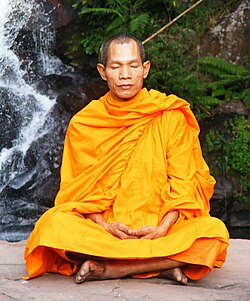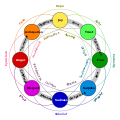

Calmness or, nonchalance is the mental state of peace of mind, being free from agitation, excitement, or disturbance. [1] It also refers to being in a state of serenity, tranquillity, or peace. [2] Calmness can most easily occur for the average person during relaxation, but it can also be found during much more alert and aware states. [3] Some people find that focusing the mind on something external, such as studying, or internal, such as breathing, can be very calming.

